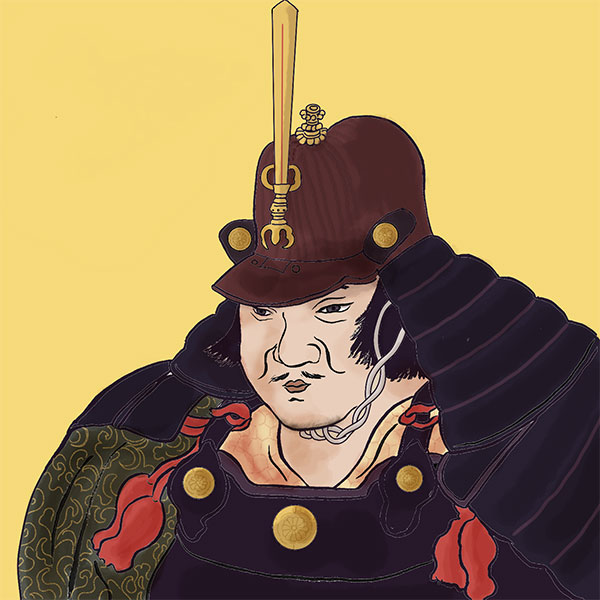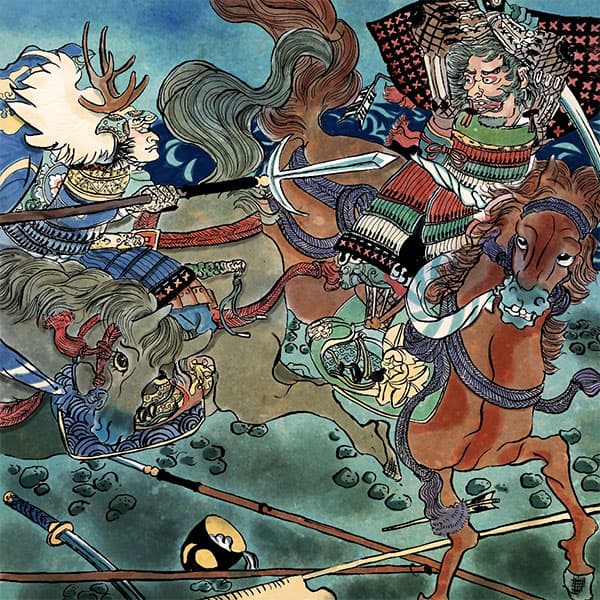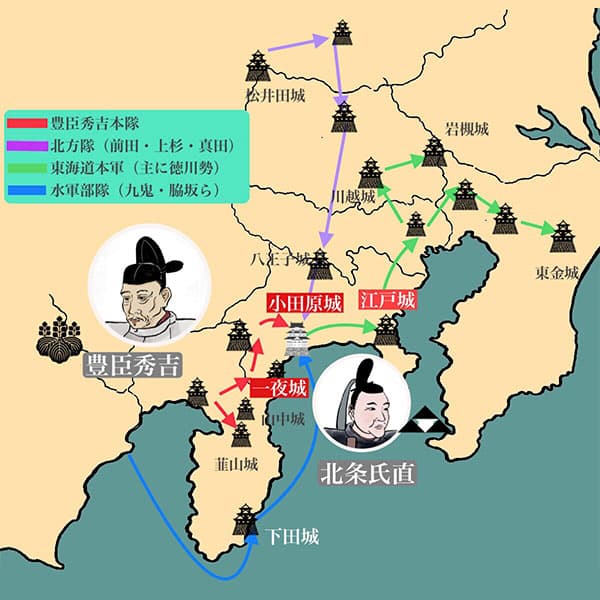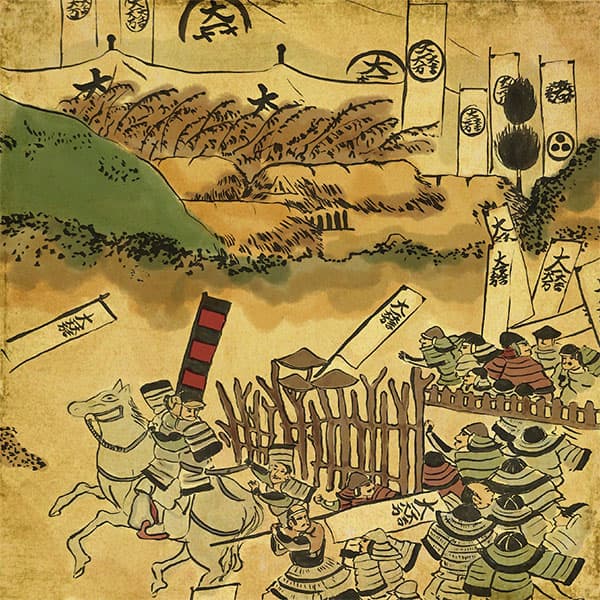Yasumasa Sakakibara (1/2)The end of the Tokugawa Four Heavenly Kings

Yasumasa Sakakibara
- Article category
- biography
- name
- Yasumasa Sakakibara (1548-1606)
- place of birth
- Aichi prefecture
- Related castles, temples and shrines

Okazaki Castle
- related incident
The Sengoku period began in the late Muromachi period. The Sengoku period was brought to an end when Tokugawa Ieyasu became ruler of Japan. Among the vassals of Tokugawa Ieyasu, the most talented vassals are called the Tokugawa Four Heavenly Kings. These include Tadakatsu Honda, Tadatsugu Sakai, and Naomasa Ii. And Yasumasa Sakakibara was one of them. Yasumasa served Tokugawa Ieyasu since he was a hostage of the Imagawa clan, and participated in almost all of Ieyasu's battles. This time, I would like to take a look at Yasumasa Sakakibara, a retainer of Fudai Ieyasu.
The Sakakibara family where Yasumasa was born
The Sakakibara clan where Yasumasa Sakakibara was born. The Sakakibara clan is an offshoot of the Seiwa Genji Ashikaga clan and the Mikawa Niki clan. The Niki clan became the Shugo daimyo of Ise Province, and a branch of the Niki clan moved to Sakakibara, Isshi District, and called itself Sakakibara. In the Sengoku period, they became vassals of the Matsudaira family (later the Tokugawa family), which ruled Mikawa Province. Yasumasa Sakakibara's father was a vassal of the Matsudaira family who served Tadanao Sakai. In other words, Yasumasa Sakakibara was born into a family of vassals.
Family inheritance from birth
Born in 1548 as the second son of Nagamasa Sakakibara in Kaminogo, Mikawa Province (present-day Kamigo-cho, Toyota City, Aichi Prefecture). He studied hard from an early age, learning calligraphy at Taijyuji Temple in Mikawa Province, and later became known as a Nohfeka. Because he studied hard and had good handwriting, he was selected as a page by Motoyasu Matsudaira (later Tokugawa Ieyasu). When his father, Nagamasa Sakakibara, died in 1562, he was placed under the guardianship of Nagamasa's younger brother, Ittokusai Sakakibara.
He reached Genpuku in 1566 at the age of 19. Along with Tadakatsu Honda, who was the same age as him, he was selected as a Hatamoto Sensuke and became a close aide to Tokugawa Ieyasu.
The Battle of Anegawa in 1570, the Battle of Mikatagahara in 1572, the Battle of Nagashino in 1575, and the Battle of Takatenjin Castle in 1581. He served in the battles of the Tokugawa clan and made many achievements. ``Bubijin Bokusho'' states, ``(Sakakibara) Yasumasa is inferior to Honda Tadakatsu in terms of military prowess, but Yasumasa and Ii Naomasa are superior in his ability to command a group (command troops).'' Although he was inferior to Honda Tadakatsu, one of the Tokugawa Four Heavenly Kings, in terms of individual strength, Yasumasa Sakakibara probably had better management ability to lead a group.
Yasumasa Sakakibara and his vassals were good at managing soldiers. Yasumasa used a flag for his troops with only the word ``nu'' written on it. The meaning of this character ``Mu'' is unknown, but it may have meant approaching the battle with ``no heart''. In addition, the armor used by Yasumasa Sakakibara, such as the ``Konitoi Nanban Dogusoku'' and the ``Kuroitoi Nimai Dogusoku,'' are housed in the Tokyo National Museum as important cultural properties.
Despite being the second son, Yasumasa Sakakibara inherits the headship of the Sakakibara family. His older brother, Kiyomasa Sakakibara, was the fief of Tokugawa Ieyasu's eldest son, Nobuyasu Matsudaira, but when Nobuyasu was forced to commit suicide, he retired out of remorse. It is also said that because Kiyomasa himself was in poor health, Yasumasa Sakakibara often acted as the representative of his older brother Kiyomasa, so he succeeded to the headship of the Sakakibara family.
However, Ieyasu also admired Kiyomasa's personality, and Tokugawa Ieyasu often visited Kiyomasa when he was sickly. This older brother, Kiyomasa Sakakibara, started a separate family from Yasumasa, and in the Edo period, the family became the owner of Kunozan Castle, where Tokugawa Ieyasu was buried, for generations.
Yasumasa Sakakibara, who achieved success in this way, gained the trust of Tokugawa Ieyasu and became a major general.
Beyond Iga
Tokugawa Ieyasu, whom Yasumasa Sakakibara served, was allied with Nobunaga Oda. Oda Nobunaga conquered many parts of Japan and was steadily approaching the position of ruler.
In 1582, Tokugawa Ieyasu visited Nobunaga's residence, Azuchi Castle, to greet Nobunaga Oda. Ieyasu's party was accompanied by most of the Tokugawa clan's senior vassals, including Tadatsugu Sakai, Tadakatsu Honda, Naomasa Ii, and Yasumasa Sakakibara. The Tokugawa family received a warm welcome from Oda Nobunaga at Azuchi Castle. From there I moved to Kyoto and Sakai. However, Oda Nobunaga was killed by his vassal Akechi Mitsuhide during the Honnoji Incident. When Nobunaga was defeated, Tokugawa Ieyasu had no soldiers and was floating in Sakai, a place with which he had no particular connection. Akechi Mitsuhide thought of defeating Ieyasu as well. Tokugawa Ieyasu and his vassals crossed the Kii Peninsula, taking the mountain passes of Iga, and then returned to Mikawa Province by boat from Ise Bay.
In this way, Tokugawa Ieyasu, who had been an ally of the Oda family or a daimyo under the Oda family, became an independent daimyo.
Battle of Komaki Nagakute and Hideyoshi Hashiba's pursuit order
After Oda Nobunaga was killed in the Honnoji Incident, Nobunaga's vassal Hashiba (Toyotomi) Hideyoshi rose to power. In 1584, Tokugawa Ieyasu clashed with Hashiba Hideyoshi, leading to the Battle of Komaki and Nagakute.
During this battle, Tokugawa Ieyasu had Yasumasa Sakakibara, who was also a writer, write a letter criticizing Hideyoshi Hashiba's takeover of the Oda family and sent it to Hideyoshi. When Hideyoshi Hashiba read it, he became furious and told his vassals that he would give 100,000 koku to whoever captured Yasumasa Sakakibara's head. Conversely, the head of Yasumasa Sakakibara, a member of the Tokugawa clan, was worth 100,000 koku, and Yasumasa's reputation spread throughout the world.
In 1586, Tokugawa Ieyasu made peace with Toyotomi Hideyoshi (Hashiba Hideyoshi). Tokugawa Ieyasu, who was reconciled, visited Toyotomi Hideyoshi with his vassals, including Yasumasa Sakakibara. At this time, Hideyoshi reconciled with Yasumasa and was promoted to Junior Fifth Rank, Lower Shikibu Daisuke, and was also given the surname Toyotomi. Yasumasa Sakakibara was so well received by Toyotomi Hideyoshi that he even received a banquet for his investiture of official rank.
Yasumasa Sakakibara was recognized as a famous vassal of the Tokugawa family.
Entry into Kanto and Tatebayashi Castle
In 1590, the Hojo family in the Kanto region was destroyed by the Toyotomi family (Odawara Conquest). In this battle, Yasumasa Sakakibara not only served as the vanguard of the Tokugawa clan advancing along the Tokaido route, but also took over the surrendered territory and served as the autopsy for Ujimasa Hojo and the brothers Ujiteru and Seppuku.
In the same year, Toyotomi Hideyoshi ordered the Tokugawa family to transfer their territory from Mikawa and other Tokai regions to Kanto. During this transfer to Kanto, Yasumasa Sakakibara was given 100,000 koku of Tatebayashi Castle in Ueno Province (present-day Tatebayashi City, Gunma Prefecture). Following Naomasa Ii, who was given 120,000 koku in Takasaki, Ueno Province, and Honda Tadakatsu, who was given 100,000 koku in Okita, Kazusa Province, three people were given the largest territory by far. This is larger than the 30,000 koku of Usui in Shimousa Province, a relative of Ieyasu Tokugawa and the elder Tokugawa clan, Ietsugu Sakai (the eldest son of Tadatsugu Sakai), indicating that the hierarchy within the Tokugawa family has changed.
After entering Tatebayashi, Yasumasa Sakakibara focused his efforts on the Tone River river construction and road maintenance.
The night before the Battle of Sekigahara and the Ukita Riots
Now, Toyotomi Hideyoshi, a ruler of Japan, passed away in 1598.
This happened after Toyotomi Hideyoshi's death. In 1599, an internal conflict broke out within the family of Hideie Ukita, one of the Five Elders and the ruler of Bizen Province (present-day Okayama Prefecture). Togawa Tatsuyasu and Oka Sadatsuna, who were senior vassals, barricaded themselves in the Ukita family's mansion in Osaka, seeking the punishment of Hideie's close aide, Nakamura Jirobee. The family was divided between the master, Hideie Ukita, and an anti-Hideie faction, an incident known as the Ukita Riot.
- related incident

- WriterTomoyo Hazuki(Writer)I have loved history and geography since my student days, and have enjoyed visiting historical sites, temples and shrines, and researching ancient documents. He is especially strong in medieval Japanese history and European history in world history, and has read a wide range of things, including primary sources and historical entertainment novels. There are so many favorite military commanders and castles that I can't name them, but I especially like Hisashi Matsunaga and Mitsuhide Akechi, and when it comes to castles, I like Hikone Castle and Fushimi Castle. Once you start talking about the lives of warlords and the history of castles, there's a side of you that can't stop talking about them.









